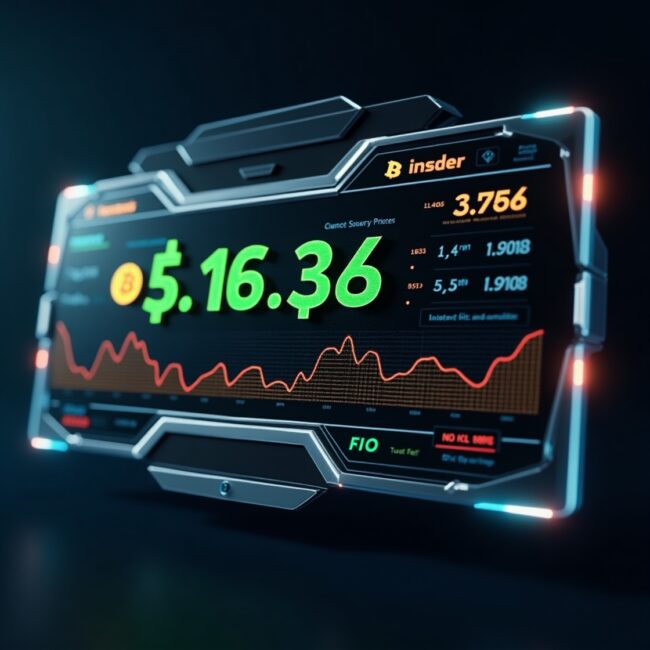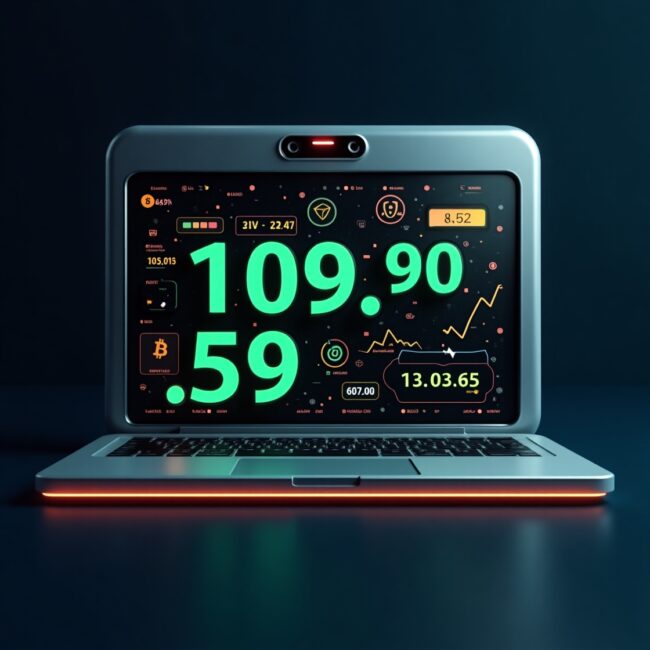Easy Ways to Understand Crypto Prices and Trends Cryptocurrency has become one of the most exciting, yet complex, financial markets today. For

Easy Ways to Understand Crypto Prices and Trends
Cryptocurrency has become one of the most exciting, yet complex, financial markets today. For newcomers, understanding how crypto prices move and how to spot trends can feel overwhelming. Unlike traditional markets, crypto is highly volatile and influenced by unique factors like technology updates, regulations, and social sentiment. But it doesn’t have to be confusing. In this article, we will explore easy ways to understand crypto prices and trends, helping you become a more confident investor or trader.
1. What Determines Cryptocurrency Prices?

At its simplest, the price of a cryptocurrency is determined by supply and demand — how many people want to buy versus sell it.
- Supply is the number of coins available. Some cryptocurrencies like Bitcoin have a fixed supply (21 million), creating scarcity which can push prices up.
- Demand depends on how many people want to own or use the crypto. If demand rises, prices tend to rise.
Prices you see on sites like Coinbase or Binance are the result of trades happening in real time on exchanges.
Why Prices Fluctuate So Much

Crypto markets are very sensitive. Even small changes in news, investor sentiment, or technology can cause big price swings. Unlike stocks, crypto markets are open 24/7 with high volatility and less regulation, leading to rapid changes.
2. Understanding Crypto Market Trends
A market trend is the general direction prices move over time.
- Uptrend: When prices keep rising with higher highs and higher lows.
- Downtrend: When prices fall with lower highs and lower lows.
- Sideways (or consolidation): When prices move within a range without clear direction.
Why Trends Matter
Trends help traders and investors decide when to buy or sell. If the trend is up, many might buy expecting prices to rise further. If the trend is down, they might sell or avoid buying.
3. How to Track Crypto Prices Easily
Use Trusted Crypto Tracking Tools
- CoinMarketCap and CoinGecko list thousands of coins with live prices, market cap, and volume.
- Crypto Exchanges like Binance or Coinbase show real-time prices.
- Portfolio Apps like Blockfolio or Delta help track your investments.
Key Metrics to Watch
- Price: The current value of one coin/token.
- Market Cap: Price × circulating supply — helps compare the size of different cryptocurrencies.
- Volume: How much of the coin has traded in a given time — high volume means active trading and better liquidity.
4. Reading Price Charts
Charts are visual tools that help you understand past price movements and predict future trends.
Candlestick Charts
- Each candlestick shows the price action for a specific time (like 1 hour or 1 day).
- The body shows opening and closing prices.
- The “wicks” show the highest and lowest prices during that time.
Simple Patterns to Spot
- Support: A price level where a coin tends to stop falling and bounce back up.
- Resistance: A price level where a coin tends to stop rising and pull back down.
- Double Tops/Bottoms: Patterns signaling a possible reversal in trend.
5. Basic Technical Indicators for Beginners
Technical indicators are formulas applied to price and volume data to forecast future movements.
- Moving Averages (MA): Smooth out price data to identify trend direction.
- Relative Strength Index (RSI): Shows if a coin is overbought or oversold.
- Volume: Confirms the strength of price movements.
These tools help remove emotional bias and make data-driven decisions.
6. Fundamental Factors Affecting Crypto Prices
Prices don’t move randomly. Fundamental factors include:
- News & Events: Regulatory changes, exchange hacks, or endorsements from influential people can spike or crash prices.
- Technology Updates: Upgrades or forks in a blockchain can increase investor confidence.
- Adoption: More businesses or users accepting a cryptocurrency can boost its value.
- Macro Environment: Inflation, interest rates, and global economic conditions also impact crypto.
7. Using Sentiment to Gauge Market Trends
Crypto prices are heavily influenced by public sentiment — how people feel about a coin.
- Monitor social media platforms like Twitter, Reddit, or Telegram to see what the community is saying.
- Use tools like Google Trends to check how often a coin is being searched.
- Sentiment analysis tools (like LunarCrush) aggregate social media data to provide sentiment scores.
Positive sentiment often drives prices up, while fear or panic causes sell-offs.
8. Common Mistakes When Analyzing Crypto Prices
- Chasing Pumps: Buying coins after a big price spike can lead to losses.
- Ignoring Risk Management: Not setting stop-loss limits can expose you to huge losses.
- Letting Emotions Rule: Fear and greed can cause poor decision-making.
- Overcomplicating Analysis: Stick to a few reliable tools and indicators.
9. Simple Strategies for Beginners
- Dollar-Cost Averaging (DCA): Invest a fixed amount regularly regardless of price, reducing the risk of buying at a peak.
- Holding (HODLing): Buy and hold through volatility for long-term growth.
- Setting Stop-Loss Orders: Automatically sell if price drops to limit losses.
10. Resources to Keep Learning
- Websites: CoinDesk, CryptoSlate, Messari
- YouTube Channels: DataDash, Coin Bureau, Andreas M. Antonopoulos
- Podcasts: Unchained, The Pomp Podcast
- Communities: r/CryptoCurrency on Reddit, Twitter crypto influencers
Conclusion
Understanding crypto prices and trends may seem tricky at first, but with the right knowledge and tools, it becomes manageable and even enjoyable. Remember to start with the basics—supply and demand, price charts, and simple indicators—then gradually explore deeper analysis as you grow more comfortable. Stay updated on news, track sentiment, and always practice smart risk management. The world of crypto is fast-paced, but with these easy methods, you can navigate it with confidence.



COMMENTS